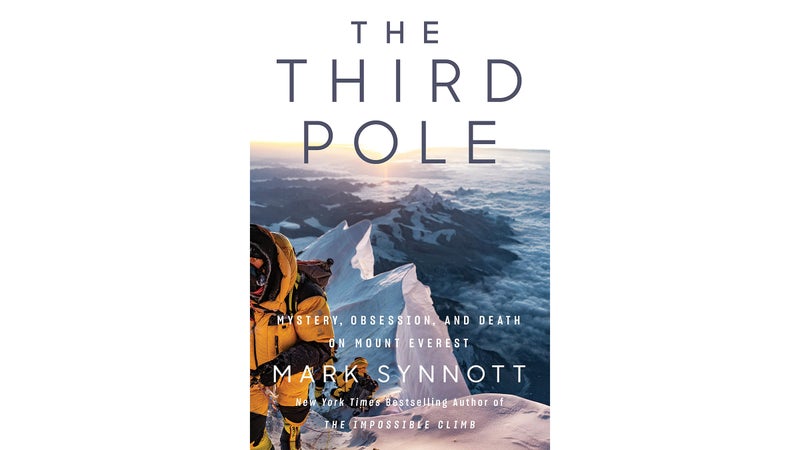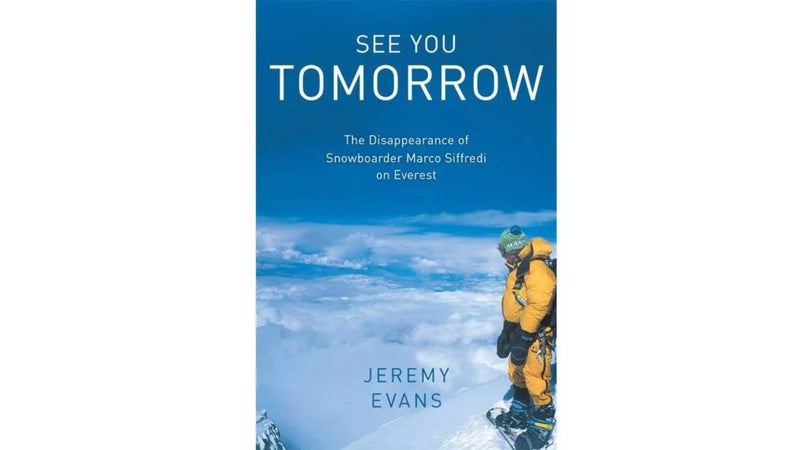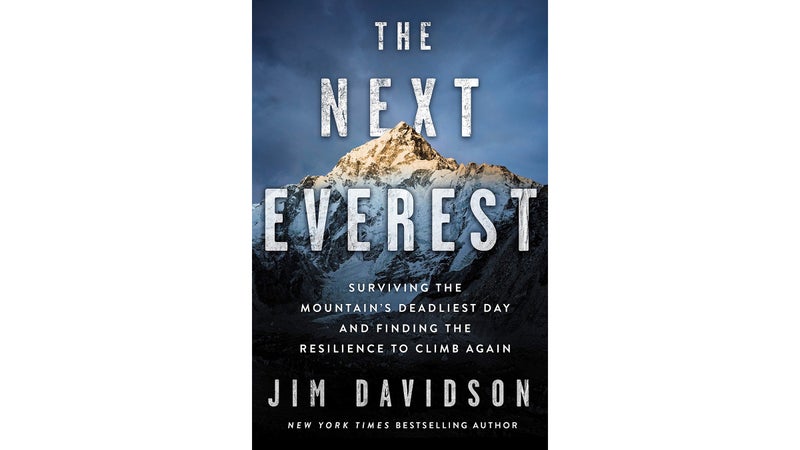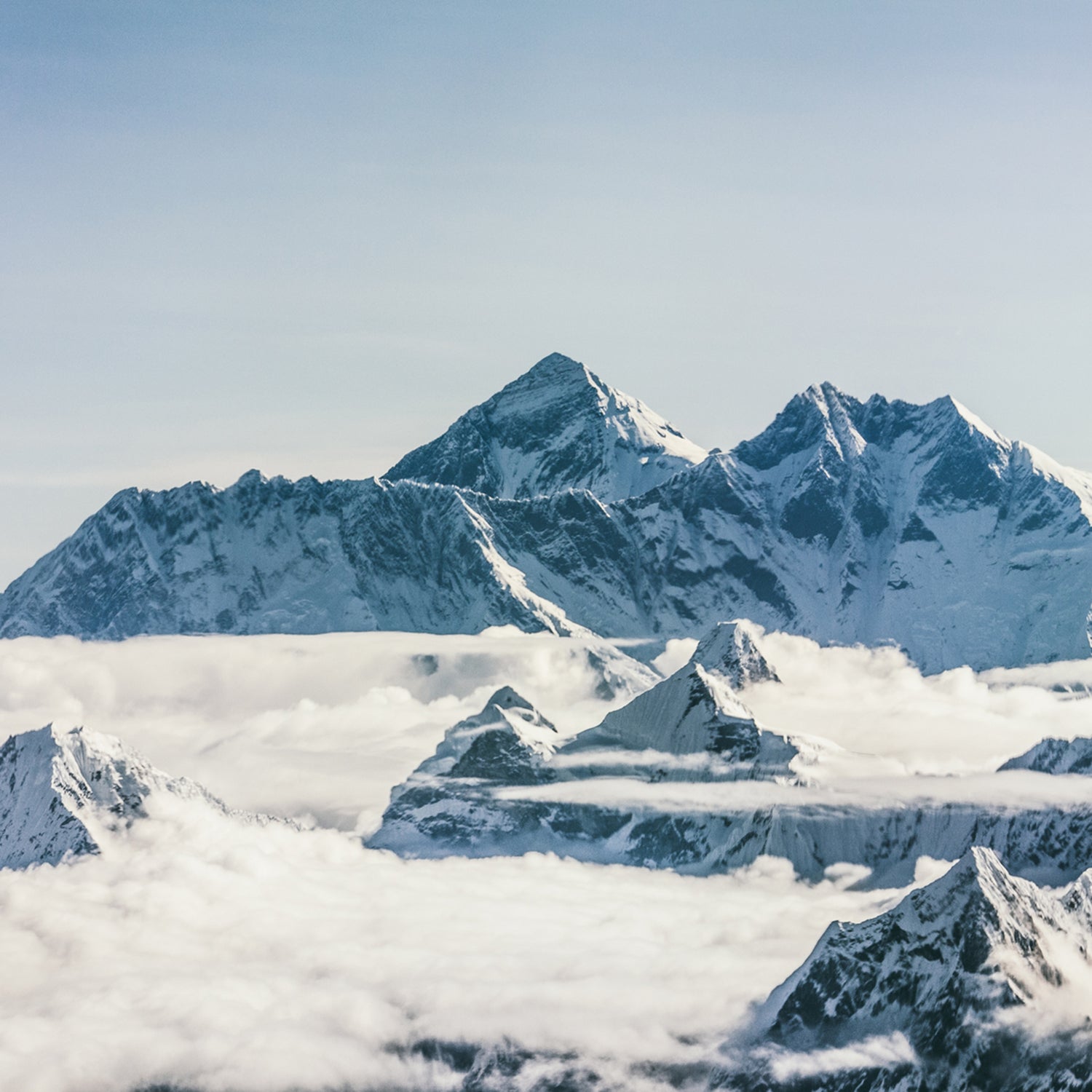Mount Everest got a break from human footsteps and media attention last spring as a result of��the coronavirus pandemic, but this month is getting into full swing. While the peak��has been climbed more than 10,000 times now, the closest most of us will ever come to touching its slopes is through��words on a page. If you’re among that crowd of armchair mountaineers, get ready to devour these new books about Everest’s most distinctive historical moments, from George Mallory’s ill-fated ascent in 1924 to the summit traffic jam of 2019.��
‘The Third Pole,’ by Mark Synnott

is the latest in a��canon of books exploring the question of whether George Mallory and Andrew “Sandy” Irvine were really��the first men to stand on top of Everest. The duo disappeared on June 8, 1924, during their summit bid via the mountain’s Northeast Ridge. Mallory’s body was discovered in 1999, but the search for Irvine continues, fueled by speculation that he was carrying a camera that might contain a photo proving they stood on the summit before their deaths. Climber and writer Mark Synnott��was a member of one such search in 2019. In this book, he deftly weaves together the tale of his own Everest expedition to the Northeast Ridge��with a compelling recounting of the 1924 Mallory and Irvine expedition. In between, he packs in as much Everest history as he can.��
Everest buffs will recognize the bulk of the historical information in the book, as Synnott relies heavily on existing sources (like Wade Davis’s and Julie Summers’s ) for that part of his narrative. Still, if you’re only going to read one Everest book this decade, make it The Third Pole. Synnott’s prose is crisp, and his story excels at encompassing all that Everest has meant to climbers over the years. He reminds us that, once, “the idea of scaling the world’s highest peak was no less daring than a modern spaceflight to Mars,” while acknowledging how many people today dismiss Everest as less than a serious challenge. Synnott was dismissive of it, too, until his friend Thom Pollard turned him onto the idea of searching for Irvine’s body. “Technically, I’m not actually climbing the mountain. I’m doing high-altitude archaeology,” he tells his wife at one point��while��mulling over the idea of joining the 2019 expedition. Soon enough, Synnott is under what he calls the “Everest spell.”
Synnott ends up both climbing to the summit and doing high-altitude archaeology—although forensic photography��might be a more apt description for the investigative technique that dominated his expedition, complete with drones piloted by climber and filmmaker Renan Ozturk.��The 2019 season proved to be an eventful one��on Everest, from political intrigue on the Chinese side of the mountain to “the day Everest broke,” when 11 people died and a viral photograph by Nirmal Purja��drew attention to overcrowding on the summit. Although��he doesn’t find Irvine’s body, Synnott’s experience on Everest is a riveting adventure all by itself.
‘See You Tomorrow,’ by Jeremy Evans

If you’ve never heard of��Marco Siffredi, the first person to descend Mount Everest on a snowboard, you’re not alone. Before Siffredi��disappeared in 2002 while attempting to snowboard Everest a second time, his fame was limited mostly to his hometown of Chamonix, France. He didn’t��like��interviews with the media and wasn’t sponsored by any brands. “He just wanted to climb and snowboard and didn’t understand how the sponsorship thing worked,” one source tells��writer��Jeremy Evans in��.��
Siffredi��accomplished his most daring feats in the late 1990s and early 2000s, before freeride snowboarding was really popular. When he disappeared, he was only 23.��“He was a young punk rock kid going and tagging the most serious lines in the Chamonix valley and doing it real freeride style … full on bombing lines that traditionally people were hop turning down,” pro snowboarder Jeremy Jones tells Evans in��the book. “Nobody was doing that yet. If he was alive today, he would be this huge name in snowboarding.”
See You Tomorrow is a profile of Chamonix as much as it is of Siffredi. Evans, who is himself a climber and snowboarder, writes of a town marked not only as the birthplace of mountaineering but as a massive graveyard for humanity’s most adventurous spirits. One chapter of the book, “Death Valley,” actually starts at the Chamonix cemetery,��where, Evans writes, “the bodies pile up so fast” and the gravestones are “adorned with ice axes, skis, and climbing ropes.” Evans argues that the townspeople are collectively traumatized by the constant fact of death in the Alps. Sadly,��Siffredi’s older brother, Pierre, died in the mountains years before he did.��
The best part of��Evans’s book��is getting to know Siffredi, whose single-minded focus might remind readers of Alex Honnold. Although Evans’s prose isn’t always the smoothest, he writes with obvious affection and reverence for his subject, and you can’t blame him, given what his sources say about Siffredi: the young man was extremely bold but didn’t make enemies. Evans asserts that Siffredi’s disappearance on September 8, 2002, somewhere between the summit of Everest and the Hornbein Couloir on the mountain’s North Face, is the greatest Everest mystery since the Mallory and Irvine expedition. He makes a good case: very few bodies literally disappear there, since most people die on the well-trafficked summit routes. This book makes clear that the search for Siffredi’s body has been as thorough as the search for Irvine’s,��to no avail.��
‘The Next Everest,’ by Jim Davidson

Jim Davidson was at Camp I on Everest’s south side in April 2015 when a massive earthquake struck Nepal and ended the Everest climbing season. His description of the chaos that the Everest climbing community experienced during that time, including serious carnage at Everest Base Camp, is the main selling point of his new book,��. (Disclosure: I was at Everest Base Camp during the earthquake and also wrote about .)
But there’s more to this book than a disaster survival story. Davidson made the same choice as many others who had their Everest expeditions cut short in 2015: to go back to Nepal and try to climb the mountain again. He wrestles with that decision��in an authentic, illuminating way,��writing,��“The biggest question for me was: Would returning to the mountain make a mess of my life or add meaning to it?” He worries about how the intense memories from his 2015 experience will affect his return, wondering if reexposure to the scene of the disaster is “healing or harmful.” And this isn’t the first time Davidson has had to confront a painful past by returning to a deadly mountain site.��
The Next Everest��alternates between recounting Davidson’s time on Everest��and his earlier expeditions in North America. He isn’t a mountain guide—he spent most of his career��as an environmental geologist—but he’s assisted with several high-altitude rescues��and racked up an impressive amount of��time in the mountains.��Davidson writes about a failed summit attempt on Denali in 2002, when he assisted a solo climber in need of rescue; finding out that his father had died while he was on Denali;��and the death��of his friend Mike Price, which happened during a climbing incident with Davidson on Mount Rainier in 1992. Price’s death is the subject of a previous book by Davidson, , but residual trauma from that event is all over the pages of The Next Everest. His description of returning to the glacier where Price was killed is gut-wrenching and dramatic; it also foreshadows the mental challenges he’ll face when going back��to Everest.
Trauma is the real subject of��The Next Everest, though Davidson would likely prefer to say it’s about resilience: he writes��in the upbeat,��what-can-we-learn-from-this��tone that permeates inspirational speeches by Everest climbers at business conferences��(it’s no coincidence that Davidson is also a��professional motivational speaker). Readers��won’t mind this tone throughout the book, however—they’ll be too busy rooting for Davidson, who comes across as humble and deserving of his second chance at reaching the top of the world.


